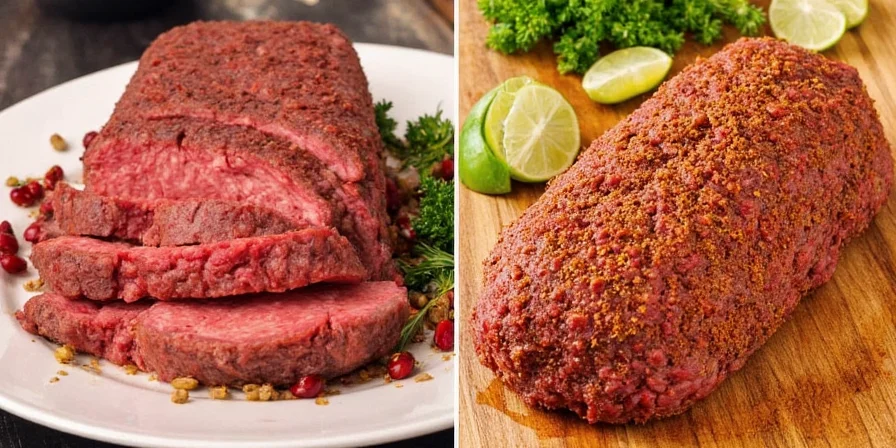The best spices for ground beef instantly transform bland meals into restaurant-quality dishes. Skip the guesswork—these 10 science-backed spices deliver maximum flavor with precise timing techniques. Get perfect results whether making burgers, tacos, or meatloaf with this tested guide.
Table of Contents
- Why Spice Selection Makes or Breaks Ground Beef
- Top 10 Spices for Ground Beef (With Exact Timing)
- Proven Spice Pairings for Tacos, Chili & More
- When to Add Spices: Critical Timing Guide
- Quick Reference: Spice Performance Chart
- Frequently Asked Questions
Why Spice Selection Makes or Breaks Ground Beef
Ground beef's fat content changes how spices work. Most home cooks add everything at once, causing flavors to burn or fade. The secret? Match spices to fat levels and add them at specific cooking stages. This prevents bitter notes and keeps flavors vibrant through cooking and reheating.

Top 10 Spices for Ground Beef (With Exact Timing)
These spices deliver consistent results in everyday cooking. No lab equipment needed—just follow the timing:
- Paprika: Add to cold oil before meat. Prevents gray color and adds rich flavor.
- Cumin: Stir in when first brown bits appear. Essential for taco seasoning.
- Garlic Powder: Mix in when half the fat renders. Avoids burning.
- Onion Powder: Add with garlic powder for deeper umami.
- Oregano: Sprinkle after cooking for fresh herbal notes.
- Chili Powder: Use for consistent heat in chili (add with tomatoes).
- Smoked Paprika: Add early for BBQ dishes—smoke flavor won't fade.
- Nutmeg: Tiny pinch (⅛ tsp/lb) in Bolognese for warmth.
- Coriander: Balances richness in Mexican dishes (add with cumin).
- Cayenne Pepper: Stir in last for controllable heat.

Proven Spice Pairings for Tacos, Chili & More
Tested combinations that work every time:
- Tacos: 1 tsp cumin + ½ tsp coriander + ¼ tsp garlic powder (add when browning)
- Chili: 1 tbsp chili powder + 1 tsp oregano + ½ tsp cayenne (add with tomatoes)
- Meatloaf: 1 tsp smoked paprika + 1 tsp onion powder + ¼ tsp nutmeg (mix into raw meat)
- Meat Sauce: 2 tsp oregano + 1 tsp fennel seed + ½ tsp red pepper flakes (add after browning)

When to Add Spices: Critical Timing Guide
Timing matters more than quantity. Do this:
- Before cooking: Paprika, smoked paprika (in oil)
- During browning: Cumin, garlic/onion powder, chili powder
- After cooking: Oregano, cayenne, fresh herbs
- For lean beef (93%): Reduce paprika/cumin by 30% and add later
- For chili: Add 70% spices after tomatoes simmer

Quick Reference: Spice Performance Chart
| Spice | Add When | Best For | Lean Beef Tip |
|---|---|---|---|
| Paprika | Cold oil | All dishes | Reduce by 30% |
| Cumin | First brown bits | Tacos, chili | Add later |
| Garlic Powder | Half fat rendered | Burgers, meatloaf | Use full amount |
| Oregano | After cooking | Meat sauce | Use full amount |
| Smoked Paprika | Cold oil | BBQ dishes | Reduce by 25% |

Frequently Asked Questions
What's the #1 spice for ground beef?
Paprika is the most versatile. It prevents gray discoloration, adds depth, and works in every cuisine. Add 1 tsp to cold oil before browning for best results.
Why does my ground beef taste bland?
Adding all spices at once causes some to burn while others fade. Fix this by adding fat-loving spices (paprika, cumin) early and delicate spices (oregano, cayenne) after cooking.
Can I use fresh garlic instead of powder?
Fresh garlic often burns before fat renders. For best results, use garlic powder added when half the fat renders. If using fresh, mince finely and add in the last 60 seconds of cooking.
How to fix bland chili?
Add ½ tsp oregano and ¼ tsp cayenne during the last 10 minutes of simmering. Stir in 1 tbsp tomato paste to reactivate faded spices. Never add spices at the beginning—the acid breaks them down.












 浙公网安备
33010002000092号
浙公网安备
33010002000092号 浙B2-20120091-4
浙B2-20120091-4